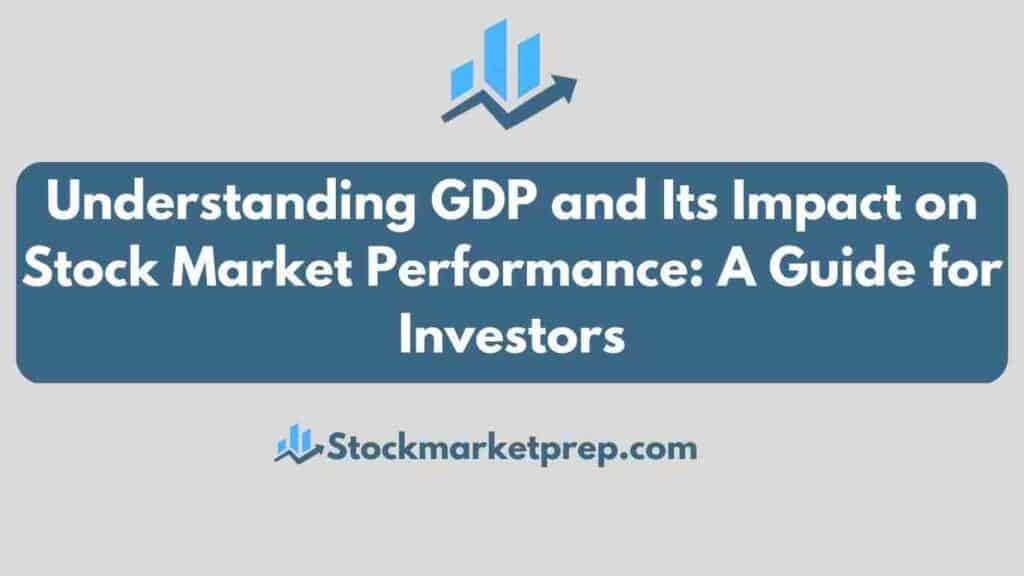
Table of Contents
ToggleI. Introduction
A. Explanation of GDP and stock market
Gross Domestic Product (GDP) is the total value of goods and services produced within a country’s borders in a specific period. The stock market, on the other hand, is a platform for buying and selling shares of publicly-traded companies. The stock market is influenced by a variety of factors, including economic indicators such as GDP.
B. Importance of GDP for stock market investors
GDP is an important economic indicator that reflects the overall health and growth of a country’s economy. This, in turn, affects the performance of the stock market. Understanding GDP and its relationship to the stock market is crucial for investors looking to make informed investment decisions.
2. Size of the Economy
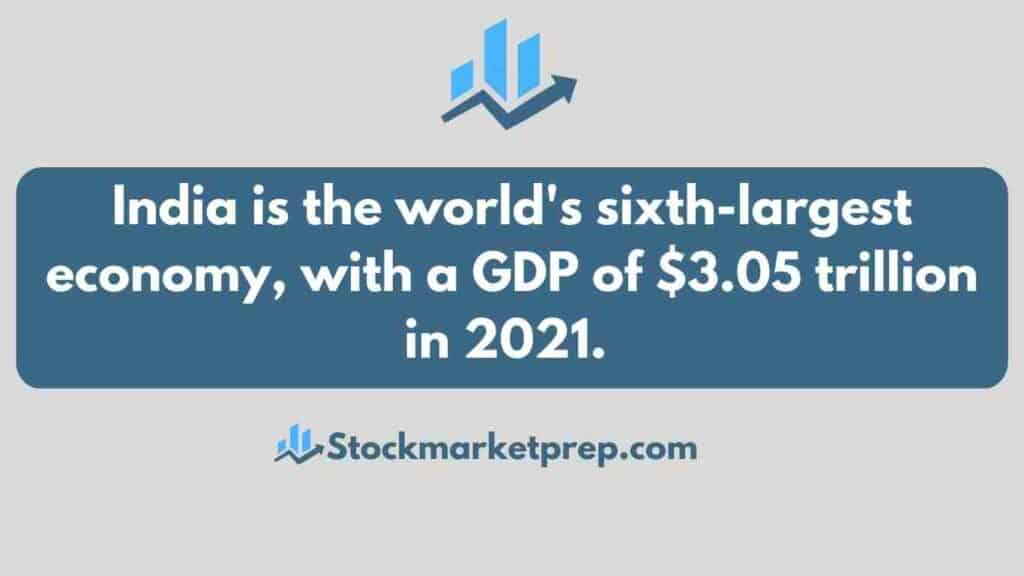
The United States has the world’s largest economy, with a GDP of over $22 trillion in 2021. The US economy is diverse, with the service sector being the largest contributor to GDP, followed by the manufacturing and agricultural sectors.
China is the world’s second-largest economy, with a GDP of $15.42 trillion in 2021. China’s economy is dominated by the industrial sector, followed by the service and agricultural sectors.
Japan has the world’s third-largest economy, with a GDP of $5.15 trillion in 2021. Japan’s economy is dominated by the service sector, followed by the industrial and agricultural sectors.
India is the world’s sixth-largest economy, with a GDP of $3.05 trillion in 2021. The Indian economy is also diverse, with the service sector being the largest contributor to GDP, followed by the industrial and agricultural sectors.
The service sector is the largest contributor to GDP in the United States, India, and Japan. In China, the industrial sector is the largest contributor, followed by the service and agricultural sectors.
Table Showing Gross Domestic Product (GDP) & Market Capitalizations of country
| Country | GDP in Dollars | Market Capitalizations in dollar |
| USA | $22.675 trillion | $51.7 trillion |
| China | $15.42 trillion | $11.1 trillion |
| Japan | $5.15 trillion | $6.2 trillion |
| India | $3.05 trillion | $2.5 trillion |
3. GDP Growth Rate
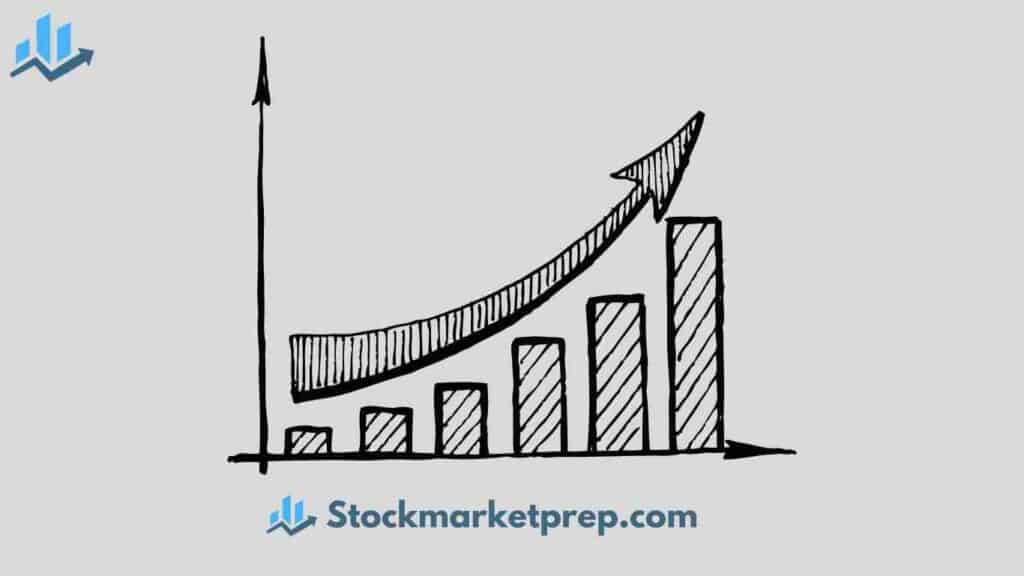
GDP growth rate is a measure of how fast or slow a country’s economy is growing or shrinking. It is calculated as the percentage change in a country’s GDP from one period to the next, typically on an annual or quarterly basis.
A positive GDP growth rate indicates that the economy is expanding, while a negative growth rate indicates that the economy is contracting.
For example, suppose a country’s GDP was $1 trillion in 2020 and increased to $1.1 trillion in 2021. The GDP growth rate for this period would be calculated as follows:
GDP growth rate = (GDP in 2021 – GDP in 2020) / GDP in 2020 x 100%
= ($1.1 trillion – $1 trillion) / $1 trillion x 100%
= 10%
4. Importance of tracking GDP Growth Rate while investing in stock market

Tracking GDP growth rate is important for investors because it can have a significant impact on the performance of the stock market. When the economy is growing, companies tend to generate higher revenues and profits, which can lead to increased stock prices and dividends. Conversely, when the economy is contracting, companies may struggle to maintain earnings growth, which can lead to lower stock prices and dividends.
One historical example of the importance of tracking GDP growth rate in India can be seen during the period of 2014-2019. During this period, India experienced an average GDP growth rate of 7.5%, which helped to drive strong stock market performance. The benchmark index, the BSE Sensex, more than doubled in value, rising from around 22,000 points in 2014 to over 45,000 points in 2019.
The strong GDP growth rate during this period was driven by a number of factors, including rising domestic consumption, infrastructure investments, and reforms aimed at improving the ease of doing business in India. These factors helped to fuel growth across a range of sectors, including financial services, consumer goods, and technology.
Investors who were able to identify and capitalize on the opportunities presented by India’s strong GDP growth rate during this period were able to generate significant returns. However, it’s important to note that the Indian economy has faced challenges in recent years, including the impact of the COVID-19 pandemic, and GDP growth rates have slowed. As such, investors must continue to closely monitor GDP growth rates and other economic indicators to make informed investment decisions.
5. Impact of GDP Growth Rate on Stock Market Performance
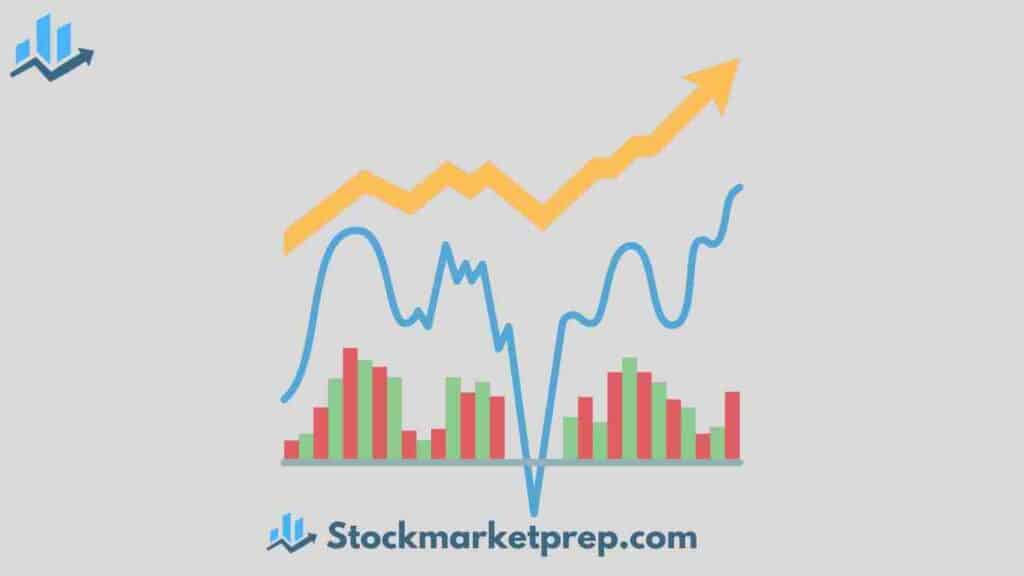
The impact of GDP growth rate on big companies and overall stock market performance can be seen in both rising and contracting growth rate scenarios.
During the period from 2003 to 2008, India experienced a sustained period of strong GDP growth, averaging around 8% annually. This helped to drive strong performance among big companies in sectors such as IT, pharmaceuticals, and financial services. As a result, the BSE Sensex rose by over 300% during this period.
However, India has also experienced periods of contracting GDP growth, such as during the global financial crisis in 2008-2009 and more recently, during the COVID-19 pandemic. In 2009, India’s GDP contracted by nearly 3.7%, which had a significant impact on the stock market, with the BSE Sensex declining by around 52% from its peak in 2008 to its low in 2009.
Similarly, in 2020, India’s GDP growth contracted by 7.7% due to the impact of the COVID-19 pandemic. This had a significant impact on big companies in sectors such as hospitality, aviation, and consumer goods. As a result, the BSE Sensex declined by around 26% in March 2020, before rebounding strongly in the following months as the economy began to recover.
These examples demonstrate how GDP growth rate can have a significant impact on overall stock market performance in India, regardless of whether GDP growth rates are rising or contracting.
While strong GDP growth rates can lead to increased revenues and profits for companies and higher stock prices, contracting GDP growth rates can lead to lower earnings growth and lower stock prices. As such, investors must take a holistic view of economic and market conditions to make informed investment decisions.
6. Most Promising Economies
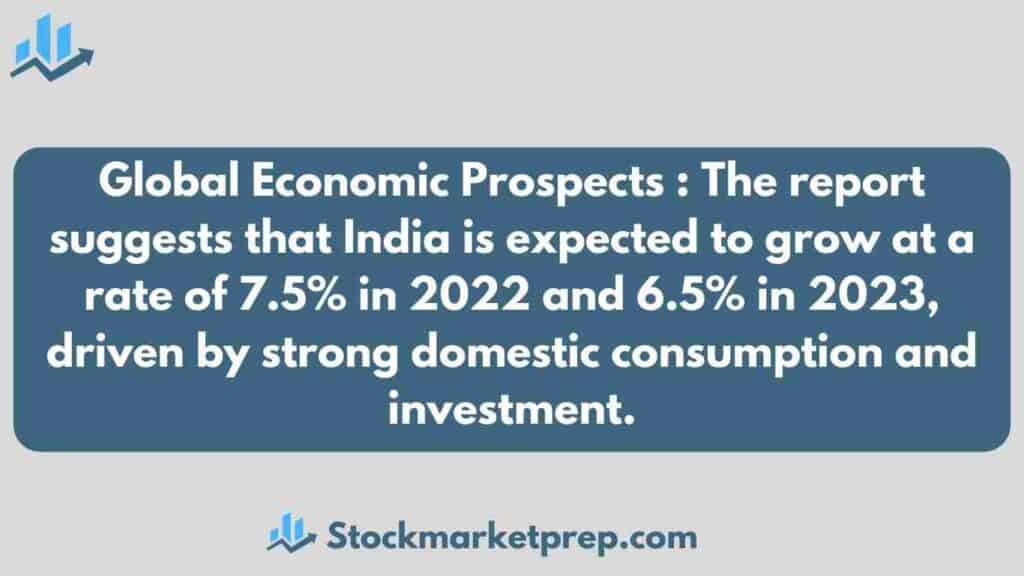
The World Bank releases a report titled “Global Economic Prospects” annually, which provides a comprehensive overview of the world economy and highlights the most promising economies.
The latest report, released in January 2022, identifies several economies as having the most promising prospects for growth in the coming years. Some of the top economies mentioned in the report are:
India: The report suggests that India is expected to grow at a rate of 7.5% in 2022 and 6.5% in 2023, driven by strong domestic consumption and investment.
China: The report suggests that China is expected to grow at a rate of 5.3% in 2022 and 5.2% in 2023, with the Chinese government implementing policies aimed at stimulating domestic demand.
Bangladesh: The report suggests that Bangladesh is expected to grow at a rate of 6.5% in 2022 and 7.1% in 2023, driven by a rebound in the export-oriented manufacturing sector and rising domestic consumption.
Vietnam: The report suggests that Vietnam is expected to grow at a rate of 6.5% in 2022 and 7.2% in 2023, with the country continuing to benefit from the relocation of manufacturing from China to Vietnam.
Philippines: The report suggests that the Philippines is expected to grow at a rate of 6.5% in 2022 and 6.6% in 2023, with the country benefiting from strong infrastructure investment and domestic consumption.
These economies are expected to outperform the rest of the world in terms of economic growth in the coming years, and present promising opportunities for investors seeking to invest in emerging markets.
However, it’s important to note that investing in emerging markets carries higher risks due to factors such as political instability and currency fluctuations, and investors should carefully consider these risks before investing.
7. Conclusion:
In conclusion, understanding the relationship between GDP and the stock market is crucial for investors looking to make informed investment decisions. Tracking GDP growth rates is important as it can significantly impact the performance of the stock market.
The examples of India’s performance during the period of 2014-2019 and the impact of the COVID-19 pandemic on the Indian economy and stock market demonstrate the importance of closely monitoring economic indicators.
The World Bank’s report on the most promising economies highlights opportunities for investors seeking to invest in emerging markets, but it’s important to carefully consider the higher risks associated with investing in these markets.
I appreciate you reading my blog post ” Understanding GDP and Its Impact on Stock Market Performance: A Guide for Investors ” I hope it was insightful. I’d appreciate your comments below. If this post is helpful then Share this post with your friends & social media. . Let’s talk and make a difference!
8. Questions & Answers:
1. What is GDP and how is it related to the stock market?
GDP, or Gross Domestic Product, is the total value of goods and services produced within a country’s borders in a specific period. The stock market is a platform for buying and selling shares of publicly-traded companies. The stock market is influenced by economic indicators such as GDP.
2. Why is it important for stock market investors to understand GDP?
Understanding GDP and its relationship to the stock market is crucial for investors looking to make informed investment decisions. GDP reflects the overall health and growth of a country’s economy, which in turn affects the performance of the stock market.
3. What are some of the largest economies in the world and what sectors dominate their GDP?
The United States has the world’s largest economy, with the service sector being the largest contributor to GDP, followed by the manufacturing and agricultural sectors. China is the world’s second-largest economy, with the industrial sector dominating, followed by the service and agricultural sectors. Japan has the world’s third-largest economy, with the service sector being the largest contributor, followed by the industrial and agricultural sectors. India is the world’s sixth-largest economy and has a diverse economy, with the service sector being the largest contributor to GDP, followed by the industrial and agricultural sectors.
4. What is GDP growth rate and why is it important for investors?
GDP growth rate is a measure of how fast or slow a country’s economy is growing or shrinking. It is calculated as the percentage change in a country’s GDP from one period to the next. GDP growth rate is important for investors because it can have a significant impact on the performance of the stock market. When the economy is growing, companies tend to generate higher revenues and profits, which can lead to increased stock prices and dividends.
5. Can you provide examples of how GDP growth rate impacts stock market performance?
During periods of sustained GDP growth, big companies in sectors such as IT, pharmaceuticals, and financial services tend to perform well, leading to increased stock prices. Conversely, during periods of contracting GDP growth, companies may struggle to maintain earnings growth, leading to lower stock prices. For example, during the global financial crisis in 2008-2009, India’s GDP contracted, leading to a significant decline in the stock market.
6. What are some of the most promising economies for investors, according to the World Bank’s report?
The World Bank’s report identifies India, China, Bangladesh, Vietnam, and the Philippines as having the most promising prospects for growth in the coming years. These economies are expected to outperform the rest of the world in terms of economic growth, providing opportunities for investors seeking to invest in emerging markets.
7. What should investors consider before investing in emerging markets?
Investing in emerging markets carries higher risks due to factors such as political instability and currency fluctuations. Investors should carefully consider these risks before investing and take a holistic view of economic and market conditions to make informed investment decisions.
Pingback: Economics and its importance in understanding stock Market: Economics Indicators - Stock Market Prep %
Pingback: Investing in Resilient Sectors During a Recession